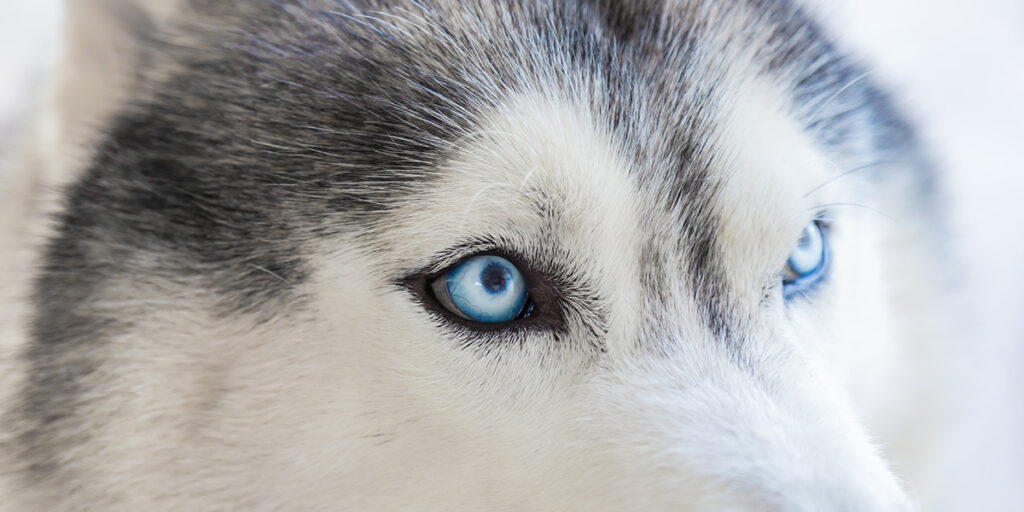Dogs have been at our side for centuries, as loyal companions through thick and thin.
We mostly think of dogs as these cute creatures that are always cheerful and happy to see us. Of course, they can feel down from time to time, but most often, they seem to be enjoying life.
But surely you’ve ever wondered:
What do dogs think about?
This question is even more interesting because dogs do not talk, so communication is more challenging. Is there a way for them to express their thoughts at all?
In today’s post, we will be discussing this intriguing question, offering our insight and some scientific findings of what goes on in a dog’s head.
Let’s take a look!
Table of Contents
Do Dogs Think the Same Way As Humans?
We are sorry to disappoint you, but science cannot give a definitive answer to this question for now.
Certainly, their intelligence is not at the level of humans, but to which extent do we differ and how exactly is very hard to say.
The primary problem that exists is:
We can’t know for sure what our dog is thinking, no matter how connected to them we may feel. At best, we can understand how our dog feels based on what they like or dislike.
What we do know is that:
Dogs understand their needs.
The dog’s thinking can be affected by everyday events or activities, especially if they are repeated.
So, for example:
If it becomes a healthy morning habit during sunny days, running can become a great experience in your dog’s mind. They will have a positive attitude about it due to the connections they create in their brain.
They will gradually develop an interest in running (if we can call it that) or a need to go outside and run in the morning.
We can say that dogs have similarities to our way of thinking since they can express their needs quite well. But how do they do that?

Dogs communicate using body language.
In a way, we can tell what our dogs are thinking because they communicate with us through simple gestures or inarticulate sounds.
By simple body language, our dogs can show us what their intentions are.
Sometimes it is enough for your dog to start pounding on your door with their paws to give you a sign that they want to go outside. Similarly, they can tap the water bowl to let you know they are thirsty.
All these simple situations indicate to you that your dog is thinking and knows well what they need to do for you to understand them.
Not only that, but they also understand you!
Dogs observe and understand their environment.
Although dogs do not have developed speech as humans, they effortlessly define problems and find solutions through observing their environment.
If trained in that way, it is enough to show your dog a hand gesture such as the index finger pointing downwards so that they know that they should sit down.
Understanding gestures and simple sounds and connecting them with particular behaviors shows that your dog may know much more than you give them credit for.
Some of these behaviors develop spontaneously through their lifetime, while we train them to understand and recognize others.
Related: How to Discipline a Dog – 5 Reliable Steps to Follow Today
Now, let’s take a look at the way dogs process emotions.
What Emotions Do Dogs Feel?
Most dogs that live in loving families spend their lives surrounded by love.
They feel emotions such as happiness, sadness, and anger just like humans do. However, it is important to note that science shows a dog cannot feel more complex emotions such as pride or shame.
We have now come to understand that dogs possess all of the same brain structures that produce emotions in humans. Dogs have the same hormones and undergo the same chemical changes that humans do during emotional states.
The only difference is the level of complexity and the extent to which their emotions can progress. They are similar to very young children (about two years old) in that regard.
Most dog parents mix fear with guilt. It occurs in situations where the dog exhibits destructive behavior or does something they are not allowed to do.
In most cases, the dog shows a sad and perhaps confused face. It looks as if they feel bad for what they did!
However, according to most recent scientific findings, dogs are not capable of feeling emotions as complex as guilt. Therefore, the confused face simply represents the fear of punishment.
Another difference between dogs and us is, of course, the method of expression for emotional reactions.
For example, a human will cry if they feel sad. Still, when our dog experiences an emotion, they express it with their body language or with sounds such as barking, whining, or howling.
What’s more, these expressions vary depending on what kind of situation they’re in. Knowing this can help to understand them better because we know what type of feeling corresponds to each sound or gesture.
Let’s move on to another interesting question:
Do Dogs Think About Past Events?

Believe it or not, a dog remembers events from the past very well!
There was even a study that proved that dogs could remember and replicate particular actions their humans did up to an hour ago.
Namely, dogs have a developed declarative memory.
This means that your dog remembers important events from the past that had a strong impact on them. These can be both positive or negative experiences.
Your dog remembers these events because they shaped their behavior.
Just like humans, dogs learn through life by going through different events, thus creating connections between specific experiences and emotions.
Proof of this assumption is the example of an adopted dog:
It often happens that the adopted dog exhibits some unusual behaviors when adapting to their new dog parent. The dog shows that they have encountered some characteristic situations earlier in life by repeating these unusual behaviors.
Also, events from the past can affect the dog’s behavior in the future. Every time a dog has an experience, it leaves a trace that will affect their behavior and actions.
Conclusion
Although perhaps dogs act as beings who do not understand the world at first glance, we have seen that the reality is different.
They will remember and think about all the beautiful things that have happened to them throughout their lives. They love their dog parents, they love food, and they even make friends!
Now, we would like to hear from you:
Does your dog have a distinctive way of showing what they are thinking?
Share your experiences in the comments below!
